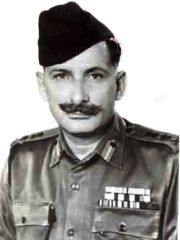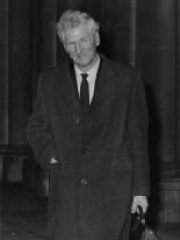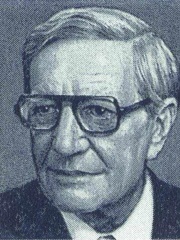
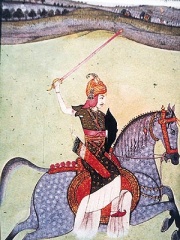
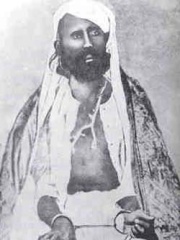
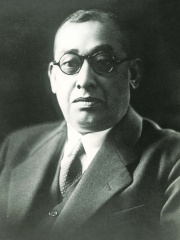
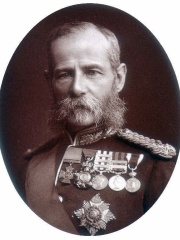
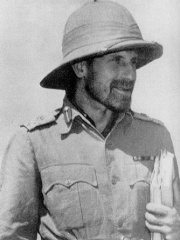
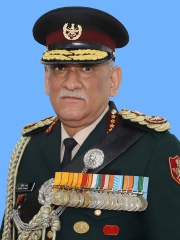
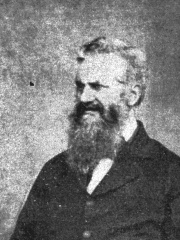
The Most Famous
MILITARY PERSONNELS from India
This page contains a list of the greatest Indian Military Personnels. The pantheon dataset contains 1,468 Military Personnels, 14 of which were born in India. This makes India the birth place of the 15th most number of Military Personnels behind Spain and Austria.
Top 10
The following people are considered by Pantheon to be the top 10 most legendary Indian Military Personnels of all time. This list of famous Indian Military Personnels is sorted by HPI (Historical Popularity Index), a metric that aggregates information on a biography’s online popularity. Visit the rankings page to view the entire list of Indian Military Personnels.

1. Kim Philby (1912 - 1988)
With an HPI of 65.70, Kim Philby is the most famous Indian Military Personnel. His biography has been translated into 41 different languages on wikipedia.
Harold Adrian Russell "Kim" Philby (1 January 1912 – 11 May 1988) was a British intelligence officer and a spy for the Soviet Union. In 1963, he was revealed to be a member of the Cambridge Five, a spy ring which had divulged British secrets to the Soviets during World War II and in the early stages of the Cold War. Of the five, Philby is believed to have been the most successful in providing secret information to the Soviets. Born in British India, Philby was educated at Westminster School and Trinity College, Cambridge. He was recruited by Soviet intelligence in 1934. After leaving Cambridge, Philby worked as a journalist, covering the Spanish Civil War and the Battle of France. In 1940 he began working for the United Kingdom's Secret Intelligence Service (SIS or MI6). By the end of the Second World War he had become a high-ranking member. In 1949 Philby was appointed first secretary to the British Embassy in Washington and served as chief British liaison with American intelligence agencies. During his career as an intelligence officer, he passed large amounts of intelligence to the Soviet Union, including the Albanian Subversion, a scheme to overthrow the pro-Soviet government of Communist Albania. Philby was suspected of tipping off two other spies under suspicion of Soviet espionage, Donald Maclean and Guy Burgess, both of whom subsequently fled to Moscow in May 1951. Under suspicion himself, Philby resigned from MI6 in July 1951 but was publicly exonerated by then-Foreign Secretary Harold Macmillan in 1955. He resumed his career as both a journalist and a spy for MI6 in Beirut, but was forced to defect to Moscow after finally being unmasked as a Soviet agent in 1963. He lived in Moscow until his death in 1988.

2. Baji Rao I (1700 - 1740)
With an HPI of 54.88, Baji Rao I is the 2nd most famous Indian Military Personnel. His biography has been translated into 32 different languages.
Bajirao I (Bajirao Ballal; Marathi pronunciation: [bad͡ʒiɾaːʋ bəlːaːɭ]; 18 August 1700 – 28 April 1740), born as Visaji, was the 7th Peshwa of the Maratha Confederacy. During his 20-year tenure as a Peshwa, his strategic prowess expanded Maratha influence in crucial regions, he engaged in several military conflicts such as Nizam's Carnatic campaigns (1725–27) and the Maratha invasion of Deccan (1739). In Bundelkhand, he rescued the Bundela ruler Chhatrasal from a Mughal siege, gaining independence for Bundelkhand. Gratefully, Chhatrasal granted Bajirao a jagir and his daughter's hand in marriage. In the 1730s, Bajirao asserted Maratha tax rights in Gujarat, defeating rebel Trimbak Rao Dabhade in the 1731 Battle of Dabhoi; he also engaged in a diplomatic mission to persuade Rajput courts for chauth payments. Further efforts to establish Maratha dominance in the Subcontinent saw him responsible for the Maratha raid on Delhi (1737) and conflicts with the Portuguese such as the Luso–Maratha War of 1729–1732. Bajirao's adventurous life has been picturized in Indian cinema and also featured in novels. Bajirao's relationship with his second wife Mastani is a controversial subject; very little is known with certainty about it. She was generally referenced cryptically in books, letters or documents from that era.

3. Tatya Tope (1814 - 1859)
With an HPI of 54.29, Tatya Tope is the 3rd most famous Indian Military Personnel. His biography has been translated into 23 different languages.
Tantia Tope (also spelled Tatya Tope, Marathi pronunciation: [t̪aːt̪ʲa ʈoːpe]; 16 February 1814 — 18 April 1859) was a notable commander in the Indian Rebellion of 1857.

4. Rash Behari Bose (1886 - 1945)
With an HPI of 53.01, Rash Behari Bose is the 4th most famous Indian Military Personnel. His biography has been translated into 17 different languages.
Rash Behari Bose ( ; 25 May 1886 – 21 January 1945) was an Indian revolutionary leader who fought against the British Empire. He was one of the key organisers of the Ghadar Mutiny and founded the Indian Independence League. Bose also led the Indian National Army (INA) which was formed in 1942 under Mohan Singh.He was behind the Delhi-Lahore Conspiracy to assassinate the Viceroy of India, Lord Hardinge, in 1912. After the failed assassination attempt, Bose fled to Imperial Japan. He sided with Imperial Japan against Britain in World War II.
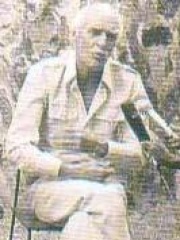
5. Mad Mike Hoare (1919 - 2020)
With an HPI of 52.72, Mad Mike Hoare is the 5th most famous Indian Military Personnel. His biography has been translated into 20 different languages.
Thomas Michael "Mad Mike" Hoare (17 March 1919 – 2 February 2020) was an Irish military officer and mercenary who fought during the Simba rebellion and was involved in carrying out the 1981 Seychelles coup d'état attempt.

6. Frederick Roberts, 1st Earl Roberts (1832 - 1914)
With an HPI of 51.46, Frederick Roberts, 1st Earl Roberts is the 6th most famous Indian Military Personnel. His biography has been translated into 23 different languages.
Field Marshal Frederick Sleigh Roberts, 1st Earl Roberts, (30 September 1832 – 14 November 1914) was a British Victorian era general who became one of the most successful British military commanders of his time. Born in India to an Anglo-Irish family, Roberts joined the East India Company Army and served as a young officer in the Indian Rebellion during which he was awarded the Victoria Cross for gallantry. He was then transferred to the British Army and fought in the Expedition to Abyssinia and the Second Anglo-Afghan War, in which his exploits earned him widespread fame. Roberts would go on to serve as the Commander-in-Chief, India before leading British Forces for a year during the Second Boer War. He also became the last Commander-in-Chief of the Forces before the post was abolished in 1904. A man of small stature, Roberts was affectionately known to his troops and the wider British public as "Bobs" and revered as one of Britain's leading military figures at a time when the British Empire reached the height of its power. He became a symbol for the British Army and in later life became an influential proponent of stronger defence in response to the increasing threat that the German Empire posed to Britain in the lead up to the First World War.

7. Orde Wingate (1903 - 1944)
With an HPI of 50.59, Orde Wingate is the 7th most famous Indian Military Personnel. His biography has been translated into 20 different languages.
Major General Orde Charles Wingate, (26 February 1903 – 24 March 1944) was a senior British Army officer known for his creation of the Chindit deep-penetration missions in Japanese-held territory during the Burma Campaign of the Second World War. Wingate was an exponent of unconventional military thinking and the value of surprise tactics. Assigned to Mandatory Palestine, he became a supporter of Zionism and set up a joint British–Jewish counter-insurgency unit. Under the patronage of the area commander Archibald Wavell, Wingate was given increasing latitude to put his ideas into practice during the Second World War. He created units in Abyssinia and Burma. At a time when Britain was in need of morale-boosting generalship, Wingate attracted British Prime Minister Winston Churchill's attention with a self-reliant aggressive philosophy of war, and was given resources to stage a large-scale operation. The last Chindit campaign may have determined the outcome of the Battle of Kohima, although the offensive into India by the Japanese may have occurred because Wingate's first operation had demonstrated the possibility of moving through the jungle. In practice, both Japanese and British forces suffered severe supply problems and malnutrition. Wingate was killed in an aircraft accident in March 1944. The casualty rate the Chindits suffered, especially from disease, is a continuing controversy. Wingate believed that resistance to infection could be improved by inculcating a tough mental attitude, but medical officers considered his methods unsuited to a tropical environment.

8. Bipin Rawat (1958 - 2021)
With an HPI of 48.67, Bipin Rawat is the 8th most famous Indian Military Personnel. His biography has been translated into 24 different languages.
General Bipin Rawat (16 March 1958 – 8 December 2021) was an Indian military officer who was a four-star general of the Indian Army. He served as the first Chief of Defence Staff (CDS) of the Indian Armed Forces from January 2020 until his death in a helicopter crash in December 2021. Prior to taking over as the CDS, he served as the 57th Chairman of the Chiefs of Staff Committee (Chairman COSC) of the Indian Armed Forces as well as 26th Chief of the Army Staff (COAS) of the Indian Army. Born in Pauri, Pauri Garhwal district in present-day Uttarkhand to Lieutenant General Lakshman Singh Rawat, he graduated from the National Defence Academy and the Indian Military Academy where he was awarded the Sword of Honour. He was commissioned into his father's unit - 11 Gorkha Rifles. He served during the 1987 Sino-Indian skirmish in the Sumdorong Chu valley. He commanded a company in Uri and his battalion - 5/11 GR along the Line of Actual Control in Arunachal Pradesh. Promoted to the rank of Brigadier, he commanded 5 sector Rashtriya Rifles in Sopore. He subsequently served with the United Nations as the Commander of a Multinational Brigade as part of MONUSCO. Promoted to general officer, Rawat commanded the 19 Infantry Division at Uri. He then served as the Major General General Staff (MGGS) at Headquarters Eastern Command. In 2014, he was promoted to the rank of Lieutenant General and appointed General officer commanding (GOC) III Corps at Dimapur. During this tenure, the 2015 Indian counter-insurgency operation in Myanmar took place where units under his command executed cross-border strikes against the NSCN-K. In early 2016, Rawat was promoted to Army Commander grade and appointed General Officer Commanding-in-Chief Southern Command. After a short stint, he moved to Army HQ as the Vice Chief of the Army Staff. In December that year, he was appointed the next Chief of the Army Staff superseding two senior generals. As the senior-most chief of staff amongst the three services, he served as the Chairman of the Chiefs of Staff Committee of the Indian Armed Forces from September to December 2019. During Rawat's tenure as the COAS, in 2017, a 73-day military border standoff happened at Doklam between the Indian Armed Forces and the People's Liberation Army.

9. Andrew Scott Waugh (1810 - 1878)
With an HPI of 48.64, Andrew Scott Waugh is the 9th most famous Indian Military Personnel. His biography has been translated into 17 different languages.
Major General Sir Andrew Scott Waugh (3 February 1810 – 21 February 1878) was a British army officer and Surveyor General of India who worked in the Great Trigonometrical Survey. He served under Sir George Everest and succeeded him in 1843. Waugh established a gridiron system of traverses for covering northern India. Waugh is credited with naming the peak of Mount Everest.
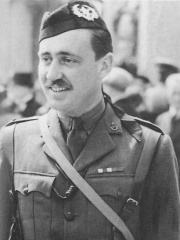
10. John Frost (1912 - 1993)
With an HPI of 47.64, John Frost is the 10th most famous Indian Military Personnel. His biography has been translated into 16 different languages.
Major General John Dutton Frost, (31 December 1912 – 21 May 1993) was an airborne officer of the British Army, best known for being the leader of the small group of British airborne troops that actually arrived at Arnhem bridge during the Battle of Arnhem in Operation Market Garden, in the Second World War. He was one of the first to join the newly formed Parachute Regiment and served with distinction in many wartime airborne operations, such as in North Africa and Sicily and Italy, until his injury and subsequent capture at Arnhem. He retired from the army in 1968 to become a beef cattle farmer in West Sussex.
Pantheon has 14 people classified as military personnels born between 1700 and 1974. Of these 14, none of them are still alive today. The most famous deceased military personnels include Kim Philby, Baji Rao I, and Tatya Tope. As of April 2022, 4 new military personnels have been added to Pantheon including Tatya Tope, Bipin Rawat, and Andrew Scott Waugh.
Deceased Military Personnels
Go to all Rankings
Kim Philby
1912 - 1988
HPI: 65.70
Baji Rao I
1700 - 1740
HPI: 54.88
Tatya Tope
1814 - 1859
HPI: 54.29
Rash Behari Bose
1886 - 1945
HPI: 53.01
Mad Mike Hoare
1919 - 2020
HPI: 52.72
Frederick Roberts, 1st Earl Roberts
1832 - 1914
HPI: 51.46
Orde Wingate
1903 - 1944
HPI: 50.59
Bipin Rawat
1958 - 2021
HPI: 48.67
Andrew Scott Waugh
1810 - 1878
HPI: 48.64
John Frost
1912 - 1993
HPI: 47.64
Sam Manekshaw
1914 - 2008
HPI: 43.48
John Hunt, Baron Hunt
1910 - 1998
HPI: 42.64

Newly Added Military Personnels (2022)
Go to all Rankings
Tatya Tope
1814 - 1859
HPI: 54.29
Bipin Rawat
1958 - 2021
HPI: 48.67
Andrew Scott Waugh
1810 - 1878
HPI: 48.64
John Frost
1912 - 1993
HPI: 47.64

Which Military Personnels were alive at the same time? This visualization shows the lifespans of the 12 most globally memorable Military Personnels since 1700.

